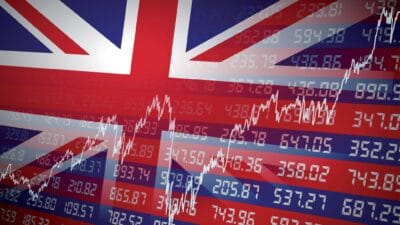At his first AGM as the newly elevated CEO of electricity utility SSE (LSE: SSE), Alistair Phillips-Davies said he was confident of achieving an above-inflation increase in the dividend “this year, and the years ahead”.
Loyal shareholders may have expected no less from the company that ranks sustained real dividend growth as its top strategic priority. Currently yielding 5.5%, it’s one of just five FTSE 100 companies to have delivered a real dividend increase every year since 1999.
But it’s encouraging to hear it from the lips of the new CEO. Now would be the time, if Mr Phillips-Davies had any doubts about the sustainability of the payout, he would be most likely to temper investors’ expectations. New CEOs have a habit of clearing the decks.
Doubters
And there are doubters. A couple of months ago fund manager Miton warned against investing in utilities, saying that most of them were funding their dividends by increasing borrowings, which is unsustainable in the long run. SSE was the worst offender, with Miton claiming that its ‘true’ cash flow had been negative since 2004.
Much simplified, SSE’s cash flow statement looks like this:
| £bn | 2013 | 2012 |
|---|---|---|
| Cash from operations | 2.0 | 2.1 |
| Investments | (1.9) | (1.9) |
| Free cash flow | 0.1 | 0.2 |
| Dividends | (0.6) | (0.7) |
| New borrowings* | 0.8 | 0.6 |
| Change in cash | 0.3 | (0.3) |
*includes hybrid capital
It’s plain to see that SSE’s cash flow is nearly all consumed by investments — mainly capital expenditure — meaning that borrowings had to increase to fund the dividend. Should investors be worried by this? I don’t think so.
Capital expenditure
SSE is in the midst of a big capital expenditure programme. In 2010, it declared it would spend £1.5-£1.7bn each year up to 2015. It’s just as legitimate to say that the increased borrowings have gone into funding those investments. The bulk of the capex has been spent in two areas:
- SSE’s regulated network business. That increases its regulatory asset base, which is used to determine how much profit it’s allowed to make;
- Its wholesale business, especially building new wind generation plant. That should boost future profits, especially given the Government’s carbon reduction commitments.
So SSE is investing to grow its business. It needs to do that to pay increasing dividends — investment is a good thing. Of course, there is a legitimate question as to whether SSE is borrowing too much, but net gearing of around 100% and interest cover of around 5 isn’t too much for a utility with steady earnings. The shares have a safe place in my portfolio.
The Motley Fool’s top income stock is also a utility. Like SSE it’s investing heavily, but most of its activities are regulated so its investment increases its regulated asset base. That’s supports its ability to increase dividends in line with inflation — and it’s yielding as much as SSE. To find out more, you can download this report. It’s free.
> Tony owns shares in SSE.







